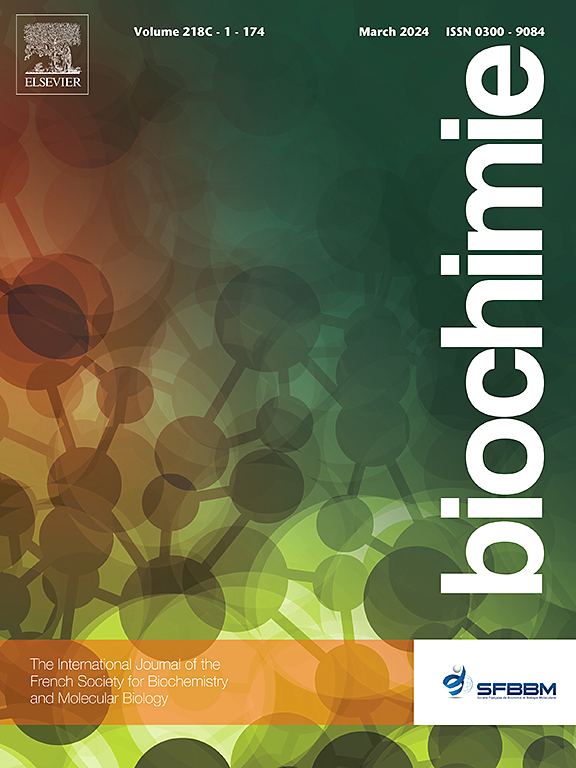The role of mitochondrial DNA in bone/cartilage diseases
IF 3
3区 生物学
Q2 BIOCHEMISTRY & MOLECULAR BIOLOGY
引用次数: 0
Abstract
Skeletons, as a human sports scaffold, provide attachment points for muscle and ligament attachment, and store significant quantities of calcium and phosphate. The aetiology of bone-related diseases is multifactorial, involving a complex interplay between osteoblasts and osteoclasts, as well as immune system abnormalities. These factors can result in impaired motor function and physical discomfort. Recent studies have indicated an association between mitochondrial DNA (mtDNA) abnormalities and the development of bone and cartilage diseases. The level of mtDNA in body fluid is expected to become a potential diagnostic marker to evaluate the degree of bone destruction and the prognosis of complications. The mtDNA copy number abnormalities, mtDNA mutations, and mtDNA leakage contribute to the deterioration of bone and cartilage-related diseases. The increase in mtDNA copy number has been demonstrated to provide more energy for the proliferation of tumour cells. Conversely, a loss of mtDNA copy number gives rise to abnormal mitochondrial function. The coupling efficiency of oxidative phosphorylation and reactive oxygen species production is modulated by different mtDNA haplotypes, thereby impacting the energy supply required for osteoblast proliferation and differentiation. mtDNA leakage induces inflammatory cytokines via interferon-related pathways and delays fracture healing. The restoration of mtDNA copy number through repair of mitochondrial biogenesis, the reduction of mtDNA leakage, or the inhibition of downstream inflammatory pathways is expected to rescue bone and cartilage-related diseases caused by mtDNA abnormalities.
线粒体DNA在骨/软骨疾病中的作用。
骨骼作为人体运动支架,为肌肉和韧带的附着提供附着点,并储存大量的钙和磷酸盐。骨相关疾病的病因是多因素的,涉及成骨细胞和破骨细胞之间复杂的相互作用,以及免疫系统异常。这些因素会导致运动功能受损和身体不适。最近的研究表明,线粒体DNA (mtDNA)异常与骨和软骨疾病的发展之间存在关联。体液中mtDNA水平有望成为评价骨破坏程度和并发症预后的潜在诊断指标。mtDNA拷贝数异常、mtDNA突变和mtDNA泄漏导致骨和软骨相关疾病的恶化。mtDNA拷贝数的增加已被证明为肿瘤细胞的增殖提供了更多的能量。相反,mtDNA拷贝数的缺失会导致线粒体功能异常。氧化磷酸化和活性氧产生的耦合效率由不同的mtDNA单倍型调节,从而影响成骨细胞增殖和分化所需的能量供应。mtDNA泄漏通过干扰素相关途径诱导炎症细胞因子并延迟骨折愈合。通过修复线粒体生物发生、减少mtDNA泄漏或抑制下游炎症途径来恢复mtDNA拷贝数,有望挽救mtDNA异常引起的骨和软骨相关疾病。
本文章由计算机程序翻译,如有差异,请以英文原文为准。
求助全文
约1分钟内获得全文
求助全文
来源期刊

Biochimie
生物-生化与分子生物学
CiteScore
7.20
自引率
2.60%
发文量
219
审稿时长
40 days
期刊介绍:
Biochimie publishes original research articles, short communications, review articles, graphical reviews, mini-reviews, and hypotheses in the broad areas of biology, including biochemistry, enzymology, molecular and cell biology, metabolic regulation, genetics, immunology, microbiology, structural biology, genomics, proteomics, and molecular mechanisms of disease. Biochimie publishes exclusively in English.
Articles are subject to peer review, and must satisfy the requirements of originality, high scientific integrity and general interest to a broad range of readers. Submissions that are judged to be of sound scientific and technical quality but do not fully satisfy the requirements for publication in Biochimie may benefit from a transfer service to a more suitable journal within the same subject area.
 求助内容:
求助内容: 应助结果提醒方式:
应助结果提醒方式:


